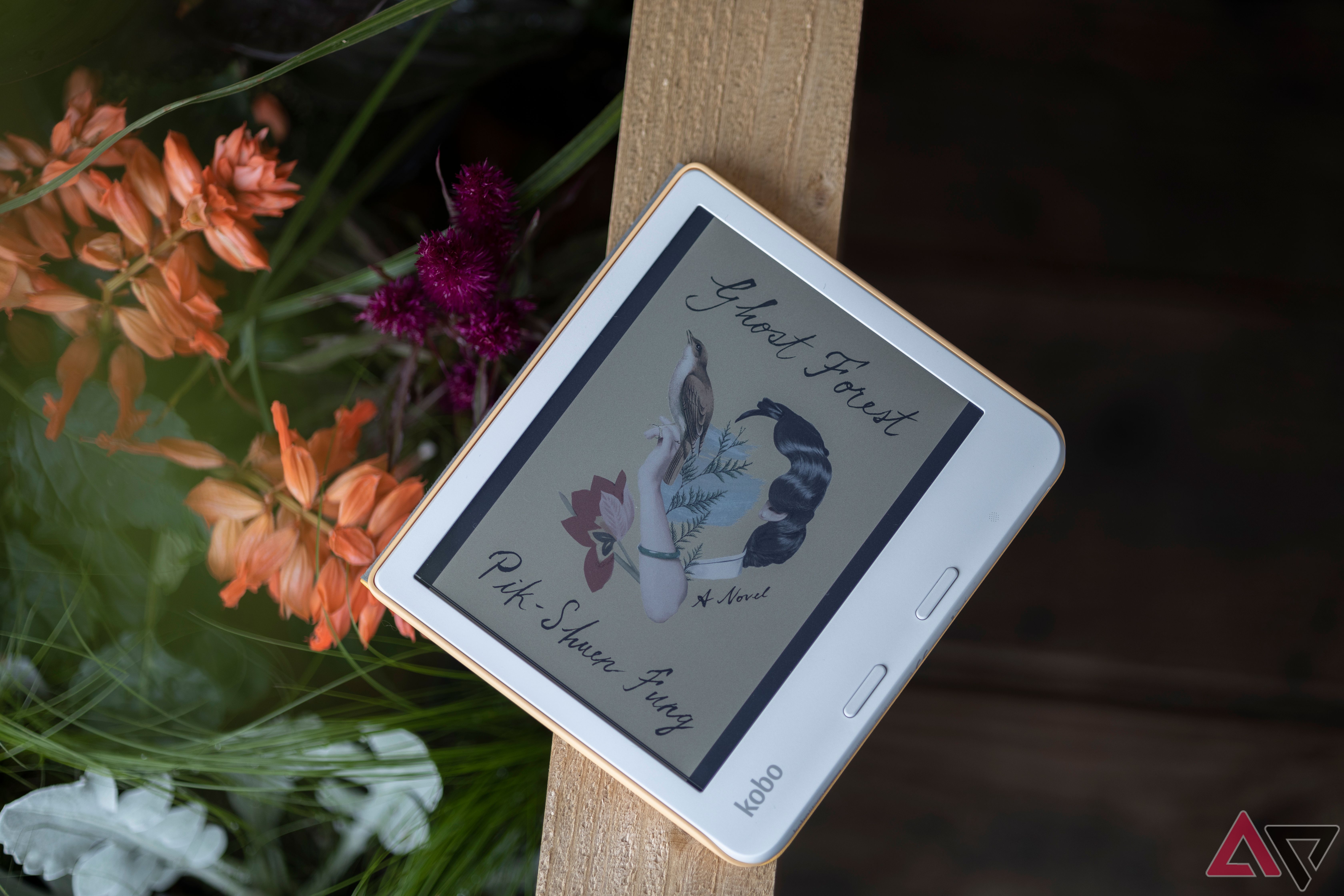Two companies have established themselves as the dominant players in the world of E Ink electronic readers. Amazon’s Kindle e-readers are the leader in the market. Specific numbers are hard to come by, but most estimates put the Kindle’s market share at around 80%. Rakuten’s Kobo e-readers have around 10% of the market, but Kobo is steadily chipping away at Kindle’s lead.
Which of these two dominant players in the market is better? More importantly, which company’s products should you buy to satisfy your insatiable desire for books when you’ve outpaced the physical limitations of your bookshelves?

Read our review
Kobo Libra Colour review: A new e-reader era in full bloom
Color is a cool feature, even if all you do is highlight text
Kindle hardware versus Kobo hardware
When it comes to hardware, Kobo has more devices on the market, and those devices are loaded with the latest tech. Kobo rocked the e-reader boat this year when it added two color e-readers to its lineup, which were cheaper than other color e-readers. Kindle currently has three models (none of which are color). However, it offers different editions of its models, with more storage, wireless charging, or a better bundled pen.
Kindle puts better hardware in its devices. The most basic Kindle you can buy has a MediaTek MT8113 dual-core CPU, the same chip Kobo uses on its high-end devices. It’s the same chip Amazon uses on its high-end devices, meaning that this edge only exists when you look at the cheapest e-readers from both manufacturers.
When it comes to everything else, there aren’t many large differences. Both offer a basic model (Kindle, Clara), a mid-range (Libra, Paperwhite), and a writer (Elipsa, Scribe). The Kobo has a larger battery, except at the high end. The Kindle is slightly lighter, except at the high end.
Kindle software versus Kobo software
Kobo’s UI beats Kindle’s
Both Kindle and Kobo have had a lot of time to refine their software, and both manufacturers make good products. But looking at both devices side-by-side, it’s clear that Kobo offers a bit more functionality than Kindle. The Kindle home screen has two tabs, Home and Library, with Home acting as a recommendations tab and Library showing your books.
Kobo’s Home tab is minimal. It focuses on your books and offloads recommendations to another tab. Instead of Library, Kobo has My Books. Both have the same organizational capabilities (grid vs. list, sort by author vs. title). One thing Kobo does that Kindle doesn’t is it allows you to sort your books by series, which is a nice feature for a fantasy nerd like me.
Kobo lets you do a bit more on its devices. Although the Home tabs of both systems show you recommendations, Kobo has a Discover tab that allows you to search for new content by genre and gives you access to local library books via OverDrive, a feature Kindle doesn’t incorporate.
Finally, Kobo has a More tab that lets you access Settings, a web browser, and a reading wishlist. Kindle has these features, but you’ll access them from an overflow menu on the Home tab. I like Kobo’s layout more, but it isn’t objectively better than Kindle’s condensed tabs.
Kobo reader versus Kindle reader: A matter of preference
Aside from trivial differences like where an option is in the UI, there isn’t much that separates the Kobo reader from the Kindle. Both let you choose your typeface (Kobo has a few more to choose from) and adjust its size and weight. Both allow you to fine-tune the margin and line spacing to suit your needs. Both have in-app dictionaries and social highlighting. In short, they both do pretty much the same thing, just with a different skin on top.
The biggest difference is how they handle non-button page turns (only Kobo sells devices with page-turn buttons: the Libra 2, Libra Colour, and the Sage). Kindle only offers one page-turning paradigm: touch the left edge or swipe right to turn to the previous page, and touch anywhere but the left edge or swipe left to turn to the next page. Kobo, on the other hand, lets you choose between four page-turning schemes. This small concession gives Kobo a slight edge over Kindle, in my opinion.
Kindle ecosystem versus Kobo ecosystem
The Amazon behemoth cannot be topped
Kindle and Kobo are built from the ground up to work best within a set e-book ecosystem. In the Kindle, the Amazon Book Store is built into the operating system. The Kobo book store is built into Kobo devices. If you subscribe to Kobo Plus, you can’t access it on a Kindle, which is true for Kindle Unlimited on a Kobo.
Aside from subscription services, Amazon has a larger selection of e-books at around 12 million compared to Kobo’s 6 million. On that scale, the average reader won’t notice a difference between the two. Still, if you’re looking for something more niche, Amazon will likely have it.
Being locked into one retailer isn’t necessarily bad because it offsets the device’s retail cost. It’s part of why other e-readers are more expensive than their Kindle or Kobo counterparts. This walled-garden approach to e-readers isn’t as constraining as it first seems because you can always sideload books you get from other sources (a process that’s easier on a Kobo).
Kindle is the clear winner with its e-book ecosystem because the size and scope of Amazon’s digital book collection are unparalleled. In addition to Amazon’s larger e-book subscription service, it has a comics-only subscription service, making it a more attractive alternative for people who read comics but not novels.

Related
How to manage your e-book library with Calibre
Take control of your e-book collection by using Calibre
The final verdict
Kindle and Kobo make some of the best e-readers on the market, informed by years of experience in the industry. But, some key differences between the two might make one better depending on your needs.
If you’re just dipping your toes into the e-reader waters and your knowledge of e-books begins and ends with Amazon, Kindle is the better device. With the Amazon store built into the device and a seamless sync between the web store and your device, Kindle is easy to use and read on.
In almost all other scenarios, Kobo comes out on top. Its interface is easier to navigate, it has a broader array of devices available, and it is easier to customize. The only thing that Kobo doesn’t have is access to Amazon books, which is easily mitigated with software like Calibre.
The e-reader market isn’t some ossified, unchanging industry. Kindle could release a new e-reader or firmware update that upends everything I mentioned so far and make Kindle the brand to beat once again.
Source link


